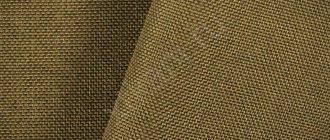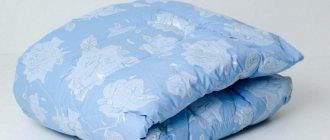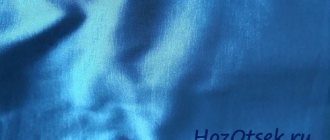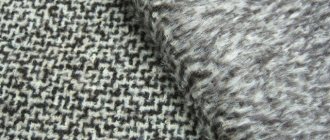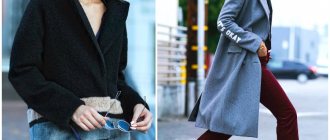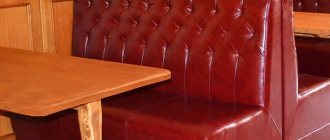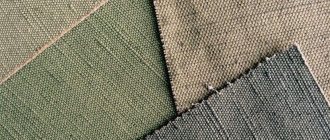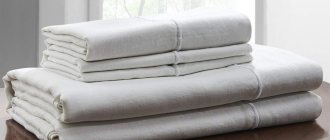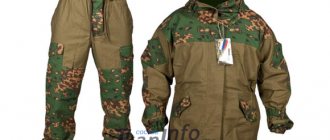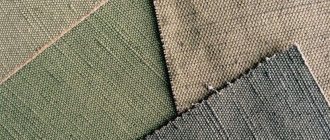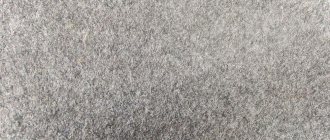(from Dutch presenning) - dense canvas impregnated with fire-resistant or water-repellent and anti-rot compounds[1]. The color is often pale yellow to brown (rarely orange) for fireproof impregnation and pale green to deep green for waterproof impregnation.
Tarpaulin fabric: production technology.
The material is made by weaving thick plant fibers. Tarpaulin fabric may contain linen, cotton, and jute. The ratio of the number of fibers determines the cost and properties of the material.
In the production of soft tarpaulins, linen and cotton threads are used, respectively 49/51%, 35/65%. To give the canvas rigidity, the material is made from jute and cotton in a ratio of 50/50%.
The density of tarpaulin varies in the range of 350-700g/m². The material has high breathability, allowing you to create a favorable microclimate inside the products. After leaving the weaving looms, the textiles are treated with special additives to impart special properties.
Types and features of tarpaulin fabrics.
Depending on the manufacturing technology and impregnation of the base, the material is divided into several types. Main types:
- Fire-resistant tarpaulin fabric that can withstand flames.
- Water-repellent material does not allow moisture to pass through.
- Bioresistant fabric has anti-putrefactive properties and is not infected by microorganisms.
Fireproof canvas is produced with special impregnations that give the material brown, yellow, red, and orange colors. The degree of flame resistance is measured in seconds, during which the fabric does not ignite.
Bioresistant tarpaulin fabric made from natural fibers is treated with special compounds. Durable fabric can remain in wet soil for a long time without changing its properties. The fabric does not become damp and resists rotting.
Tarpaulin as a material came into widespread use during the First World War. Soldiers sitting in damp trenches needed to escape the weather. Chemists experimented for a long time and came up with the idea that if they imbued dense canvas with a special substance that would not allow moisture to pass through and would not burn, this would solve many problems. And such a composition was found. Back in 1887, the German Jew Levi Strauss was quite successful in selling tarpaulins for gold miners' tents. He also invented durable canvas pants for them - Levi's jeans.
So, the tarpaulin entered the lives of the soldiers. They began to replace leather with it: cheaper, more practical, but there was one problem - the tarpaulin was very heavy and “did not breathe.” However, for a long time it was used to make waist and gun belts, boots and capes.
By the way, before the canvas fabric was impregnated, qualities similar to those of tarpaulin were discovered in hemp. These were the oldest fibers discovered on earth. Three thousand years ago, hemp was used in China to make ropes.
When it comes to tarpaulin, tarpaulin immediately comes up. And quite justified. Because the author of both materials in Russia is the inventor, Major General Mikhail Pomortsev. He became interested in the issue of producing durable fabric for the army at the beginning of the 20th century. He worked only with domestic materials - local rubber substitutes. And in 1904 I found my tarpaulin. However, he went further - he began to look for an impregnation composition that would give the fabrics the properties of leather. And I found my recipe: egg yolk, rosin and paraffin. The fabric soaked in such an emulsion did not allow water to pass through, but “breathed.” The author called the new material tarpaulin, which was the name given to coarse woolen fabric made from sheep's wool (from the name of the town of Kersey in England, where this breed of sheep was bred).
The material created by Pomortsev was appreciated. The fabric was tested during the Russo-Japanese War - bags, covers, and ammunition were made from it. And then she won several awards at international exhibitions. He suggested sewing boots from this fabric during the First World War. But then the matter failed. Manufacturers of leather shoes were afraid of being left without a large government order, so they threw all their efforts into delaying the introduction of tarpaulin boots into the army. In 1916, Mikhail Mikhailovich Pomortsev died. The promotion of tarpaulin boots has stalled. They returned to them only during the Great Patriotic War. Then the tarpaulin was invented again. Scientists Byzov and Lebedev. But they both passed away quite quickly and the issue with the tarpaulin was taken over by the scientists Khomutov and Plotnikov. They took into account both Pomortsev’s method and the latest developments. And finally the tarpaulin went into production. But the material was not finalized - the tarpaulin cracked and could not withstand the loads. And it was possible to correct the shortcomings only at the beginning of the war - an order came from above. Ivan Plotnikov was appointed chief engineer, the brightest heads were collected, and a year later they received a new tarpaulin - light, durable and comfortable. The one that everyone who had the chance to serve in the Soviet army remembers. The inventors received the Stalin Prize, 2nd degree. So the USSR, and then Russia, became the world leader in the production of tarpaulin shoes. By the way, there is another version of the name. Kirza is Kir(ovsky) for(water). It was here that mass production of new fabric was established during the Great Patriotic War.
Author: Svetlana Khlystun
https://topwar.ru/113189-izob...
Wide VO/SKPV tarpaulin. Density 440 g. Width 150 cm
PRICE: 175.50 rub.
per linear meter. Add to cart Water-repellent tarpaulin after treatment with impregnations acquires a green color of various shades. Products made from this material do not allow water to pass through. The water resistance of a fabric is measured in millimeters of water.
Depending on the impregnation, the tarpaulin fabric has the following markings:
- VO – water-repellent, can withstand loads of 10 cm of water column;
- SK – light-resistant material;
- OP – fire-resistant fabric, non-flammable for 35-50 seconds;
- PV is a material with increased waterproof properties;
- SKOP – fire-retardant fabric, resists open flames for over 50 seconds;
- SKPVT – tropical tarpaulin;
- SKP is a biostable material with water-resistant properties;
- SKPV is a highly water-repellent fabric that can withstand up to 25 cm of water. Art.
The variety of types of canvas fabrics produced by textile factories allows them to be used in various fields of industry, services, and for domestic purposes.
Tarpaulin fabric: advantages, scope.
Durable fabric made from natural plant threads is in demand due to its advantages:
- low cost;
- increased wear resistance;
- low hygroscopicity;
- resistance to temperature changes;
- fire resistance;
- breathability;
- environmental friendliness of the material.
Fabric with high strength characteristics allows the product to be used for a long period of time. The material resists mechanical stress well and does not lose its properties in natural conditions. The affordable cost of the fabric allows the fabric to be used for household and industrial purposes. Main Applications:
- construction industry;
- Agriculture;
- military sphere;
- metallurgy;
- tailoring of workwear.
Tarpaulin and products made from this fabric are widely used to create temporary shelters. Crops and building materials are stored under awnings from bad weather. Clothes made of durable fabric are indispensable equipment for firefighters, metallurgists, and welders. Products made from canvas are popular among fishermen, hunters, tourists, and car enthusiasts.
Where is it profitable to buy tarpaulin?
It is more economical to purchase canvas from manufacturers. The website salfetka-tehnicheskaya.ru presents a wide range of tarpaulin fabrics for various purposes. The company offers interested customers its own products in rolls with the following parameters:
- width 90; 150; 160cm;
- density from 240 g/m²;
- length per roll from 80m;
- cost per m² from 50 rub.
The catalog contains varieties of tarpaulins of various brands. The material is made of linen type film in accordance with regulatory requirements. The length of the rolls varies from 50 to 125 meters. The colors of fabrics depend on the impregnating compounds that give the fabrics special properties.
The company offers high-quality canvas for the manufacture of workwear with fire-resistant properties. Enterprises producing awnings, tents, and covers will benefit from SKPV brand canvas, which reliably protects from moisture and has water-repellent properties.
To ensure excavation and field work, bioresistant brands of canvas that resist the negative effects of the environment for a long period of time are suitable.
TABLE OF CARGO PARAMETERS for calculating the cost of transportation | ||||||||
| Description of goods | vendor code | Density (g/sq.m.) | Roll length (m) | Roll width (m) | Roll height (m) | Roll volume (m³) | Roll weight (kg) | Approximate quantity per roll (m) |
| Harsh tarpaulin | 11135 D | 240 | 0,9 | 0,40 | 0,20 | 0,07 | 24,00 | 80 |
| Harsh tarpaulin | 11135 s | 280 | 0,9 | 0,42 | 0,22 | 0,08 | 27,00 | 80 |
| Harsh tarpaulin | 255 s | 330 | 0,9 | 0,42 | 0,22 | 0,08 | 31,00 | 80 |
| Tarpaulin OP | 11135 D | 340 | 0,9 | 0,42 | 0,22 | 0,08 | 24,00 | 80 |
| OP tarpaulin with | 11135 | 380 | 0,9 | 0,42 | 0,22 | 0,08 | 27,00 | 80 |
| Tarpaulin OP n | 11135 | 420 | 0,9 | 0,42 | 0,22 | 0,08 | 30,00 | 80 |
| OP tarpaulin with | 255 | 430 | 0,9 | 0,42 | 0,22 | 0,08 | 31,00 | 80 |
| Tarpaulin OP n | 255 | 450 | 0,9 | 0,42 | 0,22 | 0,08 | 32,00 | 80 |
| VO/SKPV tarpaulin with | 255 | 360 | 0,9 | 0,42 | 0,22 | 0,08 | 26,00 | 80 |
| Tarpaulin VO/SKPV n | 255 | 390 | 0,9 | 0,42 | 0,22 | 0,08 | 28,00 | 80 |
| VO/SKPV tarpaulin | 11293 | 400 | 0,9 | 0,44 | 0,24 | 0,09 | 29,00 | 80 |
| Tarpaulin OP | 11293 | 480 | 0,9 | 0,44 | 0,24 | 0,09 | 26,00 | 60 |
| Tarpaulin OP | 11292 | 530 | 0,9 | 0,44 | 0,24 | 0,09 | 28,00 | 60 |
| VO/SKPV tarpaulin | 11292 | 450 | 0,9 | 0,44 | 0,24 | 0,09 | 32,00 | 80 |
| Tarpaulin OP | 11252 | 660 | 0,9 | 0,42 | 0,22 | 0,08 | 30,00 | 50 |
| VO/SKPV tarpaulin | 11252 | 590 | 0,9 | 0,40 | 0,20 | 0,07 | 26,00 | 50 |
| Tarpaulin OP | 1P1135 | 400 | 0,9 | 0,45 | 0,24 | 0,10 | 39,00 | 100-125 |
| Tarpaulin OP | 11255 | 460 | 0,9 | 0,45 | 0,24 | 0,10 | 43,00 | 100-110 |
| Tarpaulin VO | 11255 | 460 | 0,9 | 0,45 | 0,24 | 0,10 | 44,00 | 110-125 |
| OP wide tarpaulin | OP/150 | 430 | 1,5 | 0,33 | 0,16 | 0,05 | 29,00 | 40-50 |
| OP wide tarpaulin | 11293 | 480 | 1,6 | 0,33 | 0,16 | 0,05 | 34,00 | 40-50 |
| Wide VO/SKPV tarpaulin | VO/150 | 350 | 1,5 | 0,33 | 0,16 | 0,05 | 24,00 | 40-50 |
Tarpaulin fabric: main varieties, markings.
Links
| tarpaulin in Wiktionary |
| Woven decorative | Damask • Leatherette • Camlot • Lame • Brocade • Songket • Tulle |
| Woven pile | Velvet • Corduroy • Cord • Crimplene • Terry • Plush • Chenille • Broadcloth • Fleece |
| Non-woven | Felt • Flock • Interlining |
| Knitwear | Boiled wool • Velor • Jersey • Pique • Fleece |
| Lace | Mesh (fabric) • Tulle |
| Technical | Belting • Tarpaulin • Banner fabric • Calico • Thermolin • Carbon fiber • Serpyanka |
| Trademarks™ | Cordura • Coolmax • Dacron • Gore-Tex |
| Ornaments | Argyle • Glencheck • Herringbone • Houndstooth • Meander • Tartan • Paisley • Pepita |
| Finishing | Batik • Calendering • Dyeing • Mercerization • Moiring • Finishing • Sanforization • Fabric printing |
| Treatment | Textile care symbols • Dry cleaning |
| This is a preliminary article about textiles. You can help the project by adding to it. |
| : Incorrect or missing image | This article lacks links to sources of information. Information must be verifiable, otherwise it may be questioned and deleted. You may edit this article to include links to authoritative sources. This mark is set May 13, 2011 . |
K:Wikipedia:Articles without sources (type: not specified)
Excerpt characterizing Tarpaulin
- Brothers! My dears, my dears! - the old soldiers cried, crying, hugging the Cossacks and hussars. Hussars and Cossacks surrounded the prisoners and hurriedly offered them dresses, boots, and bread. Pierre sobbed, sitting among them, and could not utter a word; he hugged the first soldier who approached him and, crying, kissed him. Dolokhov stood at the gate of a ruined house, letting a crowd of disarmed French pass by. The French, excited by everything that had happened, spoke loudly among themselves; but when they passed by Dolokhov, who was lightly whipping his boots with his whip and looking at them with his cold, glassy gaze, promising nothing good, their conversation fell silent. On the other side stood the Cossack Dolokhov and counted the prisoners, marking hundreds with a chalk line on the gate. - How many? – Dolokhov asked the Cossack who was counting the prisoners. “For the second hundred,” answered the Cossack. “Filez, filez, [Come in, come in.],” Dolokhov said, having learned this expression from the French, and, meeting the eyes of passing prisoners, his gaze flashed with a cruel brilliance. Denisov, with a gloomy face, having taken off his hat, walked behind the Cossacks, who were carrying the body of Petya Rostov to a hole dug in the garden. From October 28, when frosts began, the flight of the French only took on a more tragic character: people freezing and roasting to death at the fires and continuing to ride in fur coats and carriages with the looted goods of the emperor, kings and dukes; but in essence, the process of flight and disintegration of the French army has not changed at all since the speech from Moscow. From Moscow to Vyazma, out of the seventy-three thousand strong French army, not counting the guards (which throughout the war did nothing but plunder), out of seventy-three thousand, thirty-six thousand remained (of this number, no more than five thousand died in battles). Here is the first term of the progression, which mathematically correctly determines the subsequent ones. The French army in the same proportion melted and was destroyed from Moscow to Vyazma, from Vyazma to Smolensk, from Smolensk to Berezina, from Berezina to Vilna, regardless of the greater or lesser degree of cold, persecution, blocking the path and all other conditions taken separately. After Vyazma, the French troops, instead of three columns, huddled together in one heap and continued like this until the end. Berthier wrote to his sovereign (it is known how far from the truth the commanders allow themselves to describe the situation of the army). He wrote: “Je crois devoir faire connaitre a Votre Majeste l'etat de ses troupes dans les differents corps d'annee que j'ai ete a meme d'observer depuis deux ou trois jours dans differents passages. Elles sont presque debandees. Le nombre des soldats qui suivent les drapeaux est en proportion du quart au plus dans presque tous les regiments, les autres marchent isolement dans differentes directions et pour leur compte, dans l'esperance de trouver des subsistances et pour se debarrasser de la discipline. En general ils regardent Smolensk comme le point ou ils doivent se refaire. Ces derniers jours on a remarque que beaucoup de soldats jettent leurs cartouches et leurs armes. Dans cet etat de choses, l'interet du service de Votre Majeste exige, quelles que soient ses vues ulterieures qu'on rallie l'armee a Smolensk en commencant a la debarrasser des non combattans, tels que hommes demontes et des bagages inutiles et du materiel de l'artillerie qui n'est plus en proportion avec les forces actuelles. En outre les jours de repos, des subsistances sont necessaires aux soldats qui sont extenues par la faim et la fatigue; beaucoup sont morts ces derniers jours sur la route et dans les bivacs. Cet etat de choses va toujours en augmentant et donne lieu de craindre que si l'on n'y prete un prompt remede, on ne soit plus maitre des troupes dans un combat. Le 9 November, a 30 verstes de Smolensk.”
